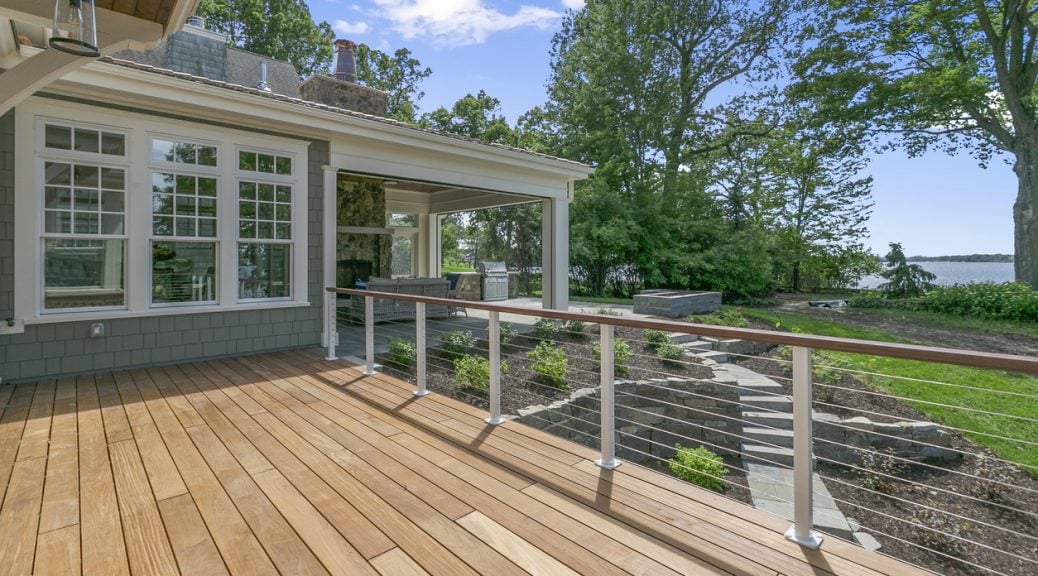Deck railings are an essential part of any deck design. Not only do they provide safety by preventing falls, but they also add an aesthetic element to the overall appearance of your deck. In this article, we’ll discuss the different types of deck railings and factors to consider when selecting a railing for your deck.
Deck railings are an essential safety feature for any elevated outdoor living space. They not only provide safety but also contribute to the aesthetic appeal of the deck. There are various types of materials used for deck railings, each with its own advantages and disadvantages.
One of the most popular materials for deck railings is wood. Wooden railings are a classic choice and can complement various architectural styles. They are available in different species, such as cedar, redwood, and pressure-treated pine. The downside of wooden railings is that they require regular maintenance, such as staining and sealing, to prevent rotting, warping, or cracking.
Another option is metal railings, which are durable and low-maintenance. Aluminum and steel are the most common metals used for deck railings. Aluminum is lightweight and resistant to corrosion, while steel is strong and sturdy. However, metal railings can get hot in direct sunlight and may not be suitable for areas with extreme weather conditions.
Vinyl and composite railings are synthetic materials that are becoming increasingly popular due to their durability and low maintenance. They are available in various colors and styles and are resistant to rot, insects, and moisture. However, they can be more expensive than wooden railings, and some may not have the same natural look and feel.https://ipewoods.com/ipe-wood-sizes/.
Types of Deck Railings: There are several types of deck railings available, each with its own unique style and benefits. Some of the most popular types include:
- Wood railings: Wood railings are a classic option that can complement a wide variety of deck styles. They can be stained or painted to match the color scheme of the deck and surrounding landscape.
- Metal railings: Metal railings are a durable and low-maintenance option. They can be made from materials such as aluminum, steel, or wrought iron and are available in a variety of styles and finishes.
- Glass railings: Glass railings offer an unobstructed view of the surrounding landscape, making them a popular choice for decks with beautiful views. They require minimal maintenance but can be more expensive than other types of railings.
- Cable railings: Cable railings are a sleek and modern option that can add a contemporary feel to the deck. They are low-maintenance, and their thin cables provide an unobstructed view of the surrounding landscape.
Factors to Consider: When selecting a deck railing, there are several factors to consider. These include:
- Safety: The primary purpose of a deck railing is to provide safety by preventing falls. The railing should be sturdy and meet local building codes.
- Style: The railing should complement the style of the deck and surrounding landscape. The type of railing you choose can also impact the overall look of the deck.
- Maintenance: Consider the level of maintenance required for the type of railing you choose. Some materials may require more maintenance than others.
- Cost: The cost of the railing can vary depending on the type of material and design. Be sure to consider your budget when selecting a railing for your deck.
Deck railings are an essential element of any deck design. They provide safety and add to the aesthetic appeal of the deck. When selecting a railing, consider factors such as safety, style, maintenance, and cost to ensure that you choose the best option for your needs.

